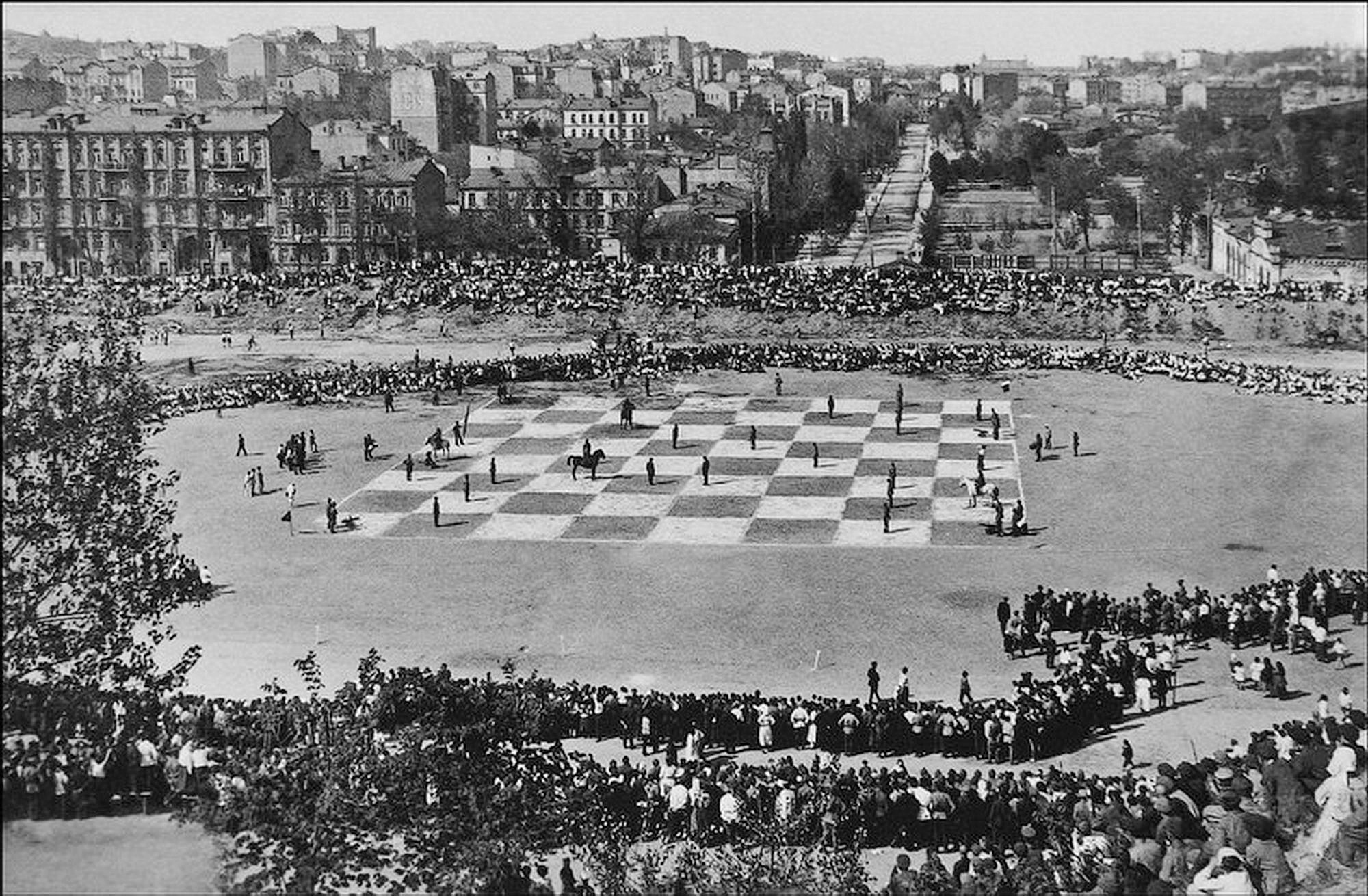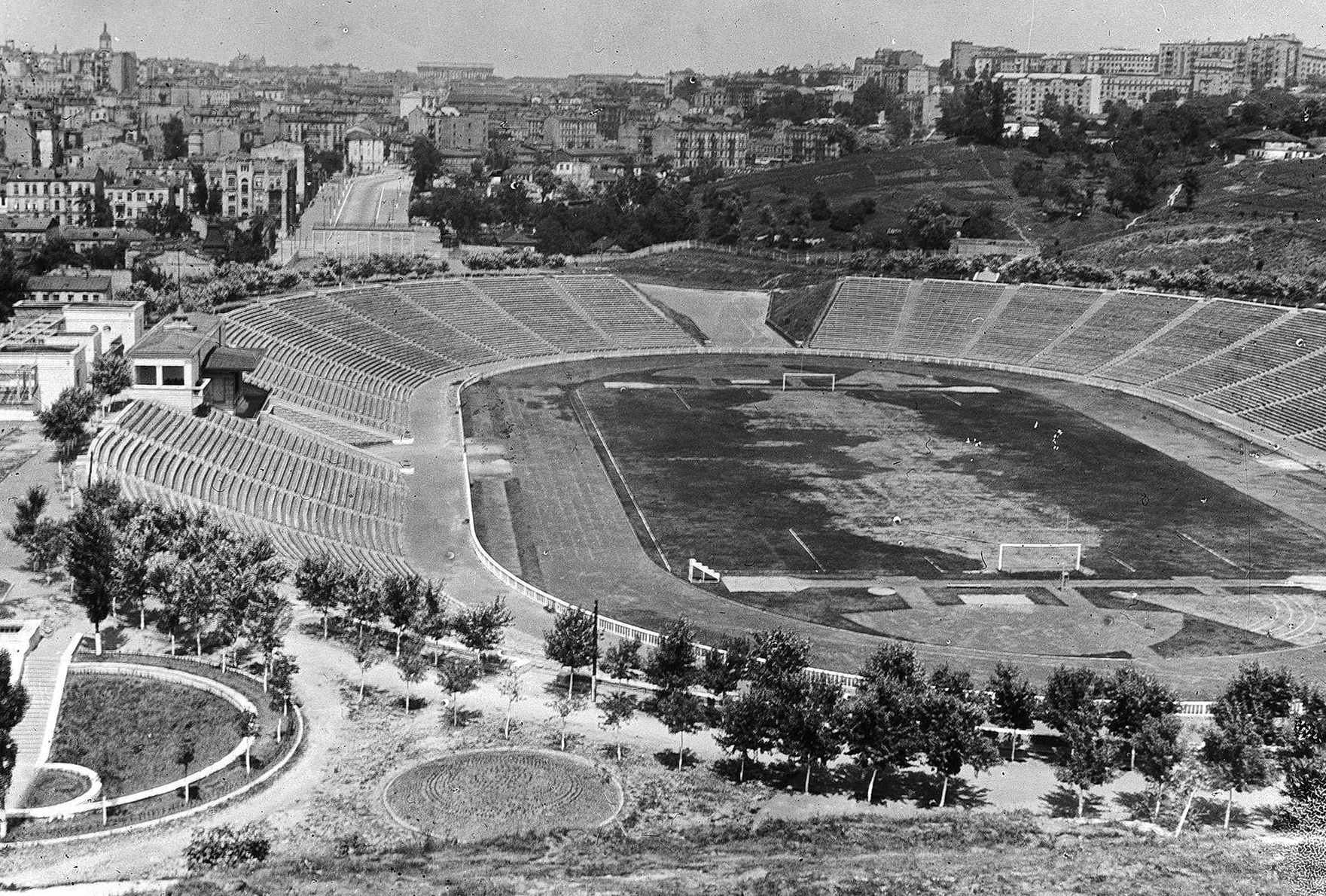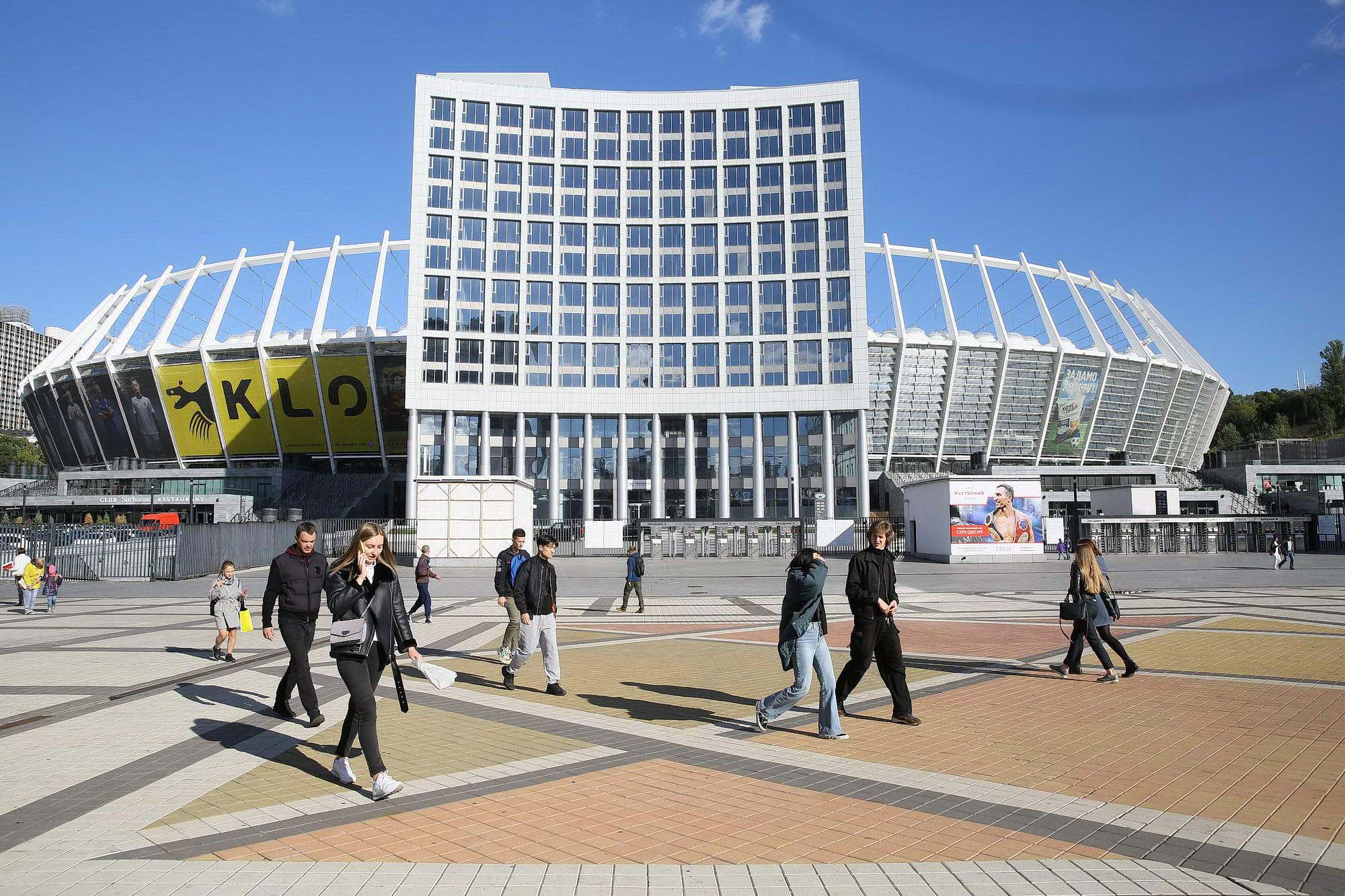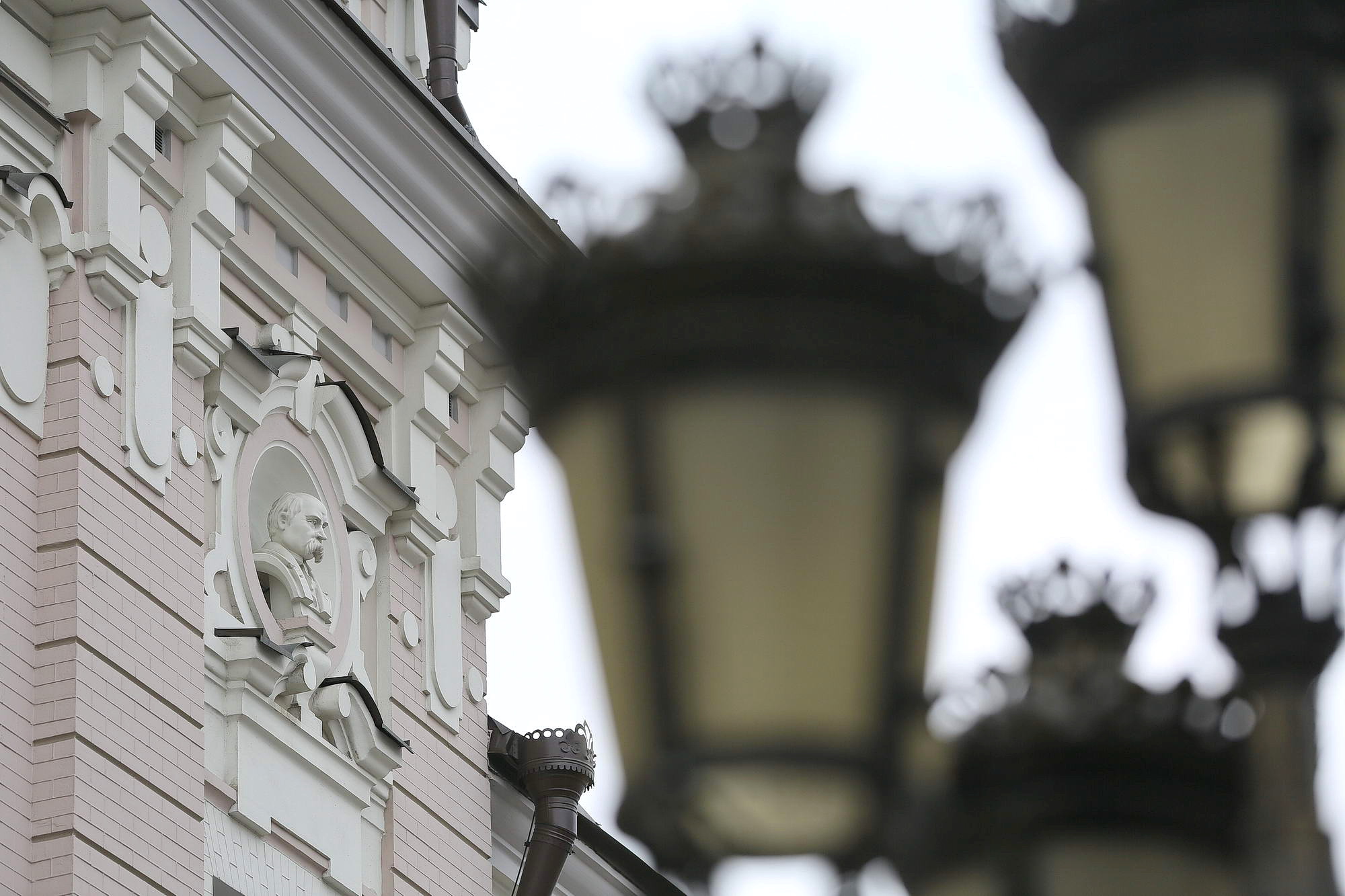Some 160 years ago, Kyiv’s Troyitska Square, now the area in front of the Olympic Stadium, was just a small market square next to a church. It was the Troyitska, or Trinity, Church that gave the square its name in the 19th century.
This Eastern Orthodox church was originally located in the Upper City — the oldest area of Kyiv near the Golden Gate, Andriyivsky Uzviz and Maidan Nezalezhnosti.
But as part of Kyiv’s expansion in the second half of the 19th century, the authorities relocated the church to what was known as the “New Development” — a new residential area south of the city center.
The new church was built in 1859, and a market square soon formed beside it. The authorities named it Lybidska Square in 1869, after a small river Lybid, running nearby.
But locals started calling it Troyitska Square, which became the unofficial name of the area. As the parish grew, the Troyitska Church reinforced its lower floor with bricks and added an annex. But this proved insufficient, since from the start of the 20th century Kyiv’s New Development started to grow, and multi-storied residential buildings appeared.
Then, just three blocks down the Velyka Vasylkivska Street, the 60-meter St. Nicholas Roman Catholic Cathedral was constructed.
The Orthodox Eparchy had to keep up. So the parish’s trusteeship commissioned a project to build a new church that would accommodate over 2,000 people and would be 65 meters tall — making it a little higher than the Catholic cathedral.
“It is desirable for the planned church to dominate this part of the city,” the order said. Construction of the new church started in 1911 near the old one, but the outbreak of World War I interrupted it. Then the Bolsheviks took Ukraine over in 1922, stopping the construction for good. By the 1930s, the uncompleted church was dismantled, and bricks re-used.
The old, smaller church was closed in the 1930s — the Communist regime had no tolerance for religion. The church resumed services during the Nazi German occupation in 1941–1943.
When the World War II ended in 1945, the church continued to function for nearly two more decades until, in 1962, the city authorities ordered it demolished.
The 93-year old church was wrecked in one night. Apart from the church, the square also lost its name, Lybidska. It officially remained nameless through the Soviet era.
But memory of its unofficial name, Troyitska, persisted among the Kyivans. It took many years to become the official name.
Finally, in February 2017 the city council ruled that the area bounded by Zhylianska, Velyka Vasylkivska and Fizkultury streets was Troyitska Square.
Then: Troyitskyi People’s House, built in 1902, still stands today. Troyitska Church on the left, however, was demolished by Soviet authorities. (Courtesy)
Now: The building of the former Troyitskyi People’s House is now the Kyiv Theater of Operetta, seen here on Sept. 28. (Pavlo Podufalov)
Industry expo
Today one side of the square is dominated by the Olympic Stadium, the biggest stadium in Eastern Europe that hosts soccer games and music shows.
In 2018, it hosted the 2018 UEFA Champions League soccer final, during which Troyitska Square was turned into a fan and concert zone. But the square has also been famous for its industry expos that took place here since the beginning of the 20th century.
The biggest one was the “All-Russian” imperial industry expo of 1913, which over four and-a-half months attracted more than a million people, including business people from Europe and the United States.
The purpose was for businesses to showcase their products, find partners and customers from all across the Russian Empire. For Kyiv residents, it was an entertaining introduction to the world’s latest industrial advances.
“The great advertising expos — from local events to world forums — had come to be a universal practice, becoming the ‘business card’ of capitalism, and Kyiv was no exception,” writes Kyiv history researcher Mykhailo Kalnytskyi in a book entitled “Kyiv’s Development in the Era of Classical Capitalism.”
The Kyiv 1913 expo was an impressive “business card.” It covered more than 69 acres, with 2,762 exhibitors housed in 132 pavilions.
The owners of the private pavilions had to dismantle them after the event, but some of the main pavilions would remain after the expo ended.
One of these was the building of the indoor market hall, construction of which was subsidized by city authorities, so it would later serve as a covered hall for the Troitskyi Market.
Another one was the pavilion for science and education, subsidized by the Ministry of Public Education, later to house the people’s college.
But today, none of the Kyiv 1913 expo pavilions are still standing. Some of them were destroyed when Kyiv was shelled during World War I, while others were dismantled during the revolutionary events of 1917– 1921 in Ukraine.
The last pavilion to be destroyed was the one that became the people’s college, and later the House of Pioneers and Schoolchildren during the Soviet era.
In the years following Ukraine’s independence, it became the House for Children and Youth Creativity, but it was demolished in 2003 to make way for a shopping mall — a project that was later canceled.
City historians were unhappy about the design of the mall, and regret the demolition of the old building.
“Unfortunately, (the mall) in no way reflected city-planning logic and the respect for the environment that the builders of the expo complexes had,” says Kalnytskyi. “It’s even more unfortunate that because of this senseless mistake, we lost the last reminder of one of the most outstanding events in Kyiv’s history.”
Troyitska Square today
Most buildings on the modern Troyitska Square were built in the Soviet era and have since been reconstructed, including Olympic Stadium.
In 1989, a 20-story hotel called Sport — the tallest hotel in Ukraine at the time — was built next to the stadium.
Today it’s the Park Inn by Radisson hotel. The only remaining building from the early 20th century on Troyitska Square is what is now the Kyiv Theater of Operetta.
It was built in 1902 as Troyitskyi People’s House — a center for education and culture. The idea to build it belonged to the Kyiv branch of the Literacy Society — an association that organized public libraries, Sunday schools, and lectures to educate the general population.
The Literacy Society rented properties around the city for its educational institutions, but needed a place of its own. In 1899 it asked the city authorities for permission to construct its own building to mark the 100th anniversary of Russian national poet Alexander Pushkin’s birthday.
The city council agreed, and designated an area on Troyitska Square, next to Troyitska Church. The Troyitskyi People’s House was built in only three years, paid for by donations from city philanthropists.
The architect designed the building free of charge, and the construction contractor performed the work at a great discount.
The finished building had rooms for workshops, a library and a central hall used for holding lectures and putting on theater plays.
The members of the Literacy Society were great admirers of Ukrainian culture, and turned the People’s House into a Ukrainian culture center in Kyiv.
For example, after the building’s completion, it was decorated not with a bust of Pushkin, but with busts of the Ukrainian Russian writer Nikolai Gogol and Ukrainian poet Taras Shevchenko. “This is the first monument to Shevchenko in Kyiv,” says Kalnytskyi. “And it still stands.”








